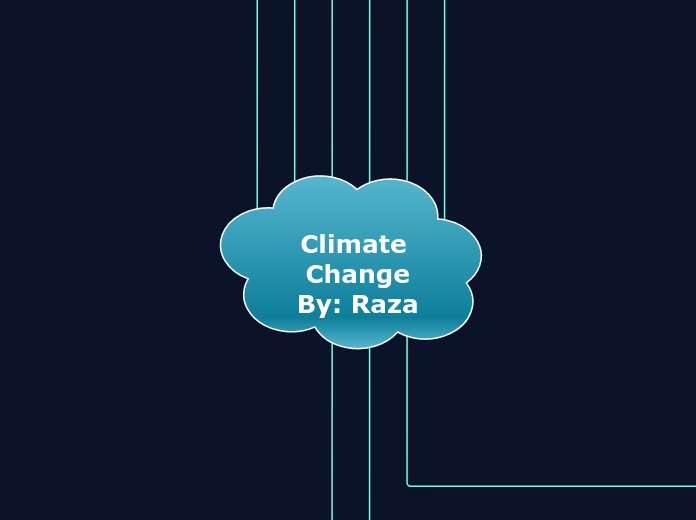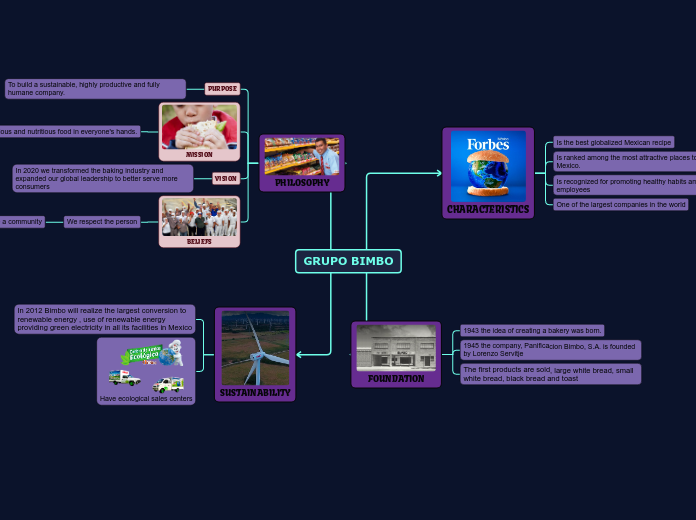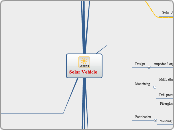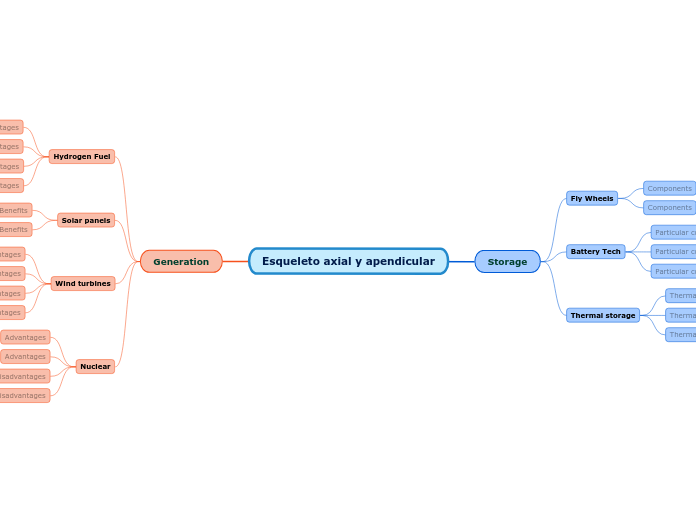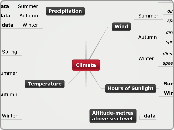Climate Change
By: Raza
Videos Day 4
Clean Energy
Can 100% renewable energy power the world?
A Ted-Ed video talks about how renewable energy power the world. There are many challenges like efficiency. For solar panels we would need to locate them in deserts. But deserts are far from civilization and thus the energy can't be transported efficiently. The same problems arise for sources like geothermal, hydro, and biomass. The only way to overcome these challenges is to discover new materials, become more innovative, and enough money to accomplish such tasks.
Renewable Energy 101: How does Biomass work?
In this video we take a look at how biomass energy works. Biomass is the original renewable energy and is made possible by the sun. The first type of biomass is plant waste. The waste is burned underneath water, the water generates steam which turn turbines and power a generator. Animal waste is another type of biomass. The waste is eaten by bacteria which creates methane gas. The methane is captured and then goes under the same process of the plant waste. Landfills can also be used as another biomass source because the decomposition creates methane gas.
Renewable Energy 101
Another video by National Geographic takes a look at renewable energy that helps reduce climate change. Renewable energy comes from naturally replenishing sources that never run out. Common sources are: solar, wind, hydro, geothermal, and biomass. However over 80% of energy humans use to this date still comes from fossil fuels. There are many benefits to these sources, some being: easy to operate facilities, reduce in climate change, no greenhouse gas emissions, prices for source is stable. But these sources are not much dependable.
What are fossil fuels?
National Geographic explains what fossil fuels are in this video. They list coal, oil, and natural gas as fossil fuels. These are non-renewable energy sources. Fossil fuels are formed from the geologic deposits below the earths surface from organic matter. The process took place through organisms trapped under rocks and sediments going through extreme pressure and heat. Fossil fuels can be used to produce energy, heat, and transportation. But burning fossil fuels lead to emission in CO2 which is a greenhouse gas.
Indicators of Climate Change
Biodiversity is collapsing worldwide. Here's why.
In this video we take a look at why biodiversity is collapsing across the world. The video shows an example of how climate change is affecting bee population. Due to increased temperature of global warming flowers in Colorado mountains are starting to grow on higher grounds. Bees unable to survive the high altitudes are fading because they are not able to collect enough nectar. Not only does this affect bees, but in an ecosystem everything is linked. Due to bees unable to pollinate the flowers will grow less, animals that are dependant on the flowers will also start to fade and an entire ecosystem will collapse while also getting rid of biodiversity.
New Studies Show Ocean Currents Are Weakening
NBC news reports that the arctic ocean currents that cool and warm Earth has weakened significantly in the last 150 years. The weakening of these currents can lead to extreme weather across different countries. It will also lead to increased sea level along United States coast. Ocean ecosystems that rely on ocean currents will also be impacted.
Europe's heat wave and climate change
CBC News reports about a heat wave that took place in Europe in 2017. The heat wave was named "Lucifer" and CBC reports that temperatures have not been this high since a decade. The heat wave had prompted heat warnings in 11 countries across Europe. The heat wave had started forest fires in Italy and even dried out the crops in Balkans. There has also been droughts in Bosnia. Citizens in Spain have been visiting the beach a lot. Data collected on climate change indicates that 1000 thousand people can die if no action is taken against climate change by the year 2100.
Videos Day 3
What Fossils Reveal about Today's Climate Change
In this an interviewer named Emily goes around Washington D.C. interviewing a paleontologist and paleo biologist about animal and plant fossils. For animal fossils they show how animals reacted to climate changes and mutated to absorb the levels of carbon dioxide that were changed. For plant fossils the paleo biologist looked in the Wyoming desert for 10 years looking for a patch where plant fossils were buried according to data scientists had analyzed from cores in Antarctica.
Clear Lake Coring for Climate Change
Using sediments from one of the oldest lakes in the United States, the clear lake cores give data of how animals and micro-organisms reacted to climate change. These records can go back at least 130,000 years. Using a drill they go over a spot in a lake and then begin drilling in order to get a core. Then using a tool called Lake Sediment Core tool they pump water into the strings to hold the drill in place. The drill then goes 3 meters deep to collect the core. After that they carefully organize and label the core samples in order to transport them back to the lab. Using the pollen, fossilized insects, and chemical compositions of the sediments, scientists can then reconstruct the history of environmental change in the Clear lake area.
CO2 in the Ice Core Record
This video takes us to a National Ice Core Lab in Denver, Colorado. Has ice cores from all over the world kept in cylinders at a temperature of minus 35 degrees. The oldest core gives data going back 400,000 years. Ancient cores from Greenland and Antarctica give data on Earth's past climates. When examining an ice core there are layers within the ice which tell you the seasons the ice has been through, summer and winter. A core containing ash from a Icelandic volcano that blew up 50,000 years ago. The ice cores contain bubbles from when the water was being frozen. These bubbles are made out of air that dates back 400,000 years ago. Using these bubbles scientists can identify the concentration of greenhouse gasses precisely from the past. The ice cores have a repeating pattern of CO2 going: 180 ppm and then 280 ppm. They can also track the temperature and when comparing the data with each other you can see that they are very similar. But ever since the industrial revolution we have crossed 380 ppm of CO2 and have not slowed down since.
Lord of the Tree Rings
In this video a Dendochronologist named David Stahle talks about tree rings. David tells us that the fat rings and skinny rings are information about wet and dry years. David compares the climate history stored in rings to fingerprinting. Using this data, David is helping Mexico prepare for future droughts by using tree ring data and looking at how the trees responded to droughts in the past. It also helps prepare countries in the future for any droughts. Tree rings also help solve mysteries such as the colony "Roanoke" disappearing. Dendochronologists have said that a drought may have played a role in the disappearance of the colony.
Tree Stories
Each tree records information and data about the environment it grows in. The process of analyzing this data is called Dendrochronology, "dendro" for tree and "chronology" for time. Scientists take small samples from cores of dead trees about the diameter of a pencil. To identify droughts they check to see if the rings are narrow. Scientists are able to identify from which years the trees experienced droughts and grew in by just taking a look at the rings. Sometimes the scientists are able to find up to 10,000 years of data. Using this data scientists can incorporate it into forecast models to prepare for droughts in the future.
Videos Day 2
The Basics of Climate Feedback Loops
Climate feedback loop is when 1 process causes another process to occur. Which then causes the first process to occur more frequently. There are many positive feedbacks in Earth. The video then mentions a positive feedback: melting of polar sea ice. Sea ice reflects more heat than ocean water. When the sea ice melts there is more heat being reflected than absorbed in the ocean. This causes the water to warm at a faster rate. This all goes back to melting the sea ice even more. They mention another feedback which is permafrost melting and releasing methane. Then they say that if this is not stopped this can become an unstoppable greenhouse gas emission.
New report says nitrous oxide from farming accelerating climate change
Global news reports that nitrous oxide is increasing in the atmosphere due to agriculture. Farms are using nitrogen fertilizer and the biproduct is the nitrous oxide gas being released into the air. While nitrous oxide only contributes 7% to greenhouse gas emissions it is still 300 times more deadlier than carbon dioxide. Fertilizer companies are researching ways for farmers to use fertilizer efficiently and reduce the greenhouse gas emissions.
Do Cow Farts Really Significantly Contribute to Global Warming?
In this video we take a look at how cow's contribute in global warming. There are 1.5 billion cows are currently on earth. The way cows contribute is by burping and farting a lot which produces methane and increases the concentration of methane in the air. Cows contribute 18% more to the greenhouse effect than human transportation. Taking a look at how exactly cows produce methane: cows have four stomachs and in the first stomach there are millions of microbes that help digest food. These microbes while trying to help digest food also make a lot of methane. Methane is bad because it traps 21 times more energy than carbon dioxide and is the most destructive of all greenhouse gasses.
The Greenhouse effect
This video talks about the general idea of a greenhouse effect.
It describes what a greenhouse is and how humans use it to grow food in seasons that don't let those foods grow regularly. It then compares a greenhouse to the Earth talking about how it absorbs and sends back the sun's low energy radiation. But then it shows how due to humans producing too much carbon from cars, planes, and factories. It is making the Earth's temperature too warm and causing the equilibrium to be upset.
Greta Thunberg
In this video a young lady known as Greta Thunberg talks about Climate change. She talked about how humans have a very big impact on climate change. She described how she fell into depression at age 11 due to climate change and was later diagnosed with Asperger's Syndrome. She then goes onto talk about how countries should reduce emissions and implement carbon taxes. Nearing the end of the speech she talks about how climate change will affect the future if we do not take action.
Videos Day 1
The Earth's Energy Balance
This video tells us that Earth's temperature depends on the radiation it receives from the sun:
- The Earth reflects 30% of the Sun's radiation
- It absorbs 70% of the Sun's radiation
- The Earth emits longwave radiation to stop from overheating
- The colder Earth gets the less it emits radiation.
- This process creates a state called Equilibrium
- Radiative Equilibrium indicates that the amount of longwave radiation emitted by the Earth is equal to the amount of radiation absorbed by the Earth. This way the Earth stays cool and has had a constant temperature over a long period of time.
- New Radiative Equilibrium is when the amount of radiation the Earth absorbs is increased so the Earth matches the amount of Radiation it reflects in order to equalize it.
13 Misconceptions About Global Warming
People have misconceptions about global warming not being real. This is mostly due to old data which was collected before advanced technology like satellites existed and scientists did not have proper ways to measure climate change. Individuals with these misconceptions often do not look at all the information and read the information that supports their theory forgetting to take everything into account.
Climate Change is Boring
Most people do now know much about climate change, they have very little knowledge because they don't think it is a major issue. Due to this they are not taking the right actions and are even in some cases saying that it is not true due to arguments made by individuals who have their own personal interests in climate change.
Koppen Geiger
There are 5 broad categories: A - E. These categories start from the north pole and end at the equator. These categories are then further subdivided and form a three or two digit Koppen geiger classification. The second letter tells us when the zone has a dry season. The third letter tells us how hot and cold a zone is.
Lesson 5
Clean Energy
Images
Changing Our Energy Sources
Wind Power: - wind causes blades of turbine to turn which then produces energy
- energy is stored in generators which supply power
Pros: - renewable energy source
- no waste is created
- Spain, Portugal, Denmark, and Germany are 1/5 powered by wind
Cons: - wind is unpredictable and will not always be consistent, can not rely on it all the time
- some people dislike the appearance of wind turbines
Solar Power: - solar panels absorb energy from the sun and convert it into electricity
Pros: - renewable energy source
- can get energy in any remote location
- once it is setup properly it does not cost much
Cons: - energy is not produced during night time
- cost of purchasing and installing solar panels are expensive
- weather plays a role in the amount of energy absorbed (clouds may block the sun light)
Hydroelectricity: - energy of moving water turn turbines in dams to power generators
Pros: - produces a lot of energy
- waterfalls will exist whether we utilize them or not
- renewable energy source
Cons: - very expensive projects to build: can costs millions and sometimes billions of dollars
- potentially impact ecosystems related to waterfalls
- can be affected by droughts
- weather can affect energy generated: Niagara falls completely froze in the year 1911
Nuclear Power: - energy created from the splitting of atom's nuclei
Pros: - clean-burning energy, almost no carbon emission
- produces a lot of energy through nuclear fission
Cons: - left over atomic pieces produce nuclear waste
- nuclear waste gives off radiation
- many disasters have occurred: Chernobyl Nuclear Disaster in Ukraine 1986, there is still a pile of radioactive sludge called "the elephant's foot" which can kill you if you spend 2 minutes in 5 feet range
- The fukushima nuclear disaster in Japan 2011, happened very recently and leaked a lot of radiation
Biomass: - waste from crops, manure, and garbage
- can be used to make biofuels like methane, gas, and biodiesel
- fuels can be burned for heat or to generate electricity with a steam turbine
Pros: - renewable energy source
- no shortage of manure, crops, and garbage waste
- carbon neutral: is part of the carbon cycle and absorbed during photosynthesis
- not as expensive then coal and oil
Cons: - requires large area to operate
- is not expensive than coal and oil but still has a significantly high cost
Current Energy Source
Fossil Fuels
- coal, petroleum, and natural gas
- burned to produce energy (heat) to turn turbines
Pros: - well developed technology
- cheap and reliable
Cons: - produces greenhouse gasses
- non-renewable (in short term)
- unsustainable
- fuel accidents
Lesson 4
Indicators of Climate Change
Effects of Climate Change on Wildlife
- Polar bears usually travel on ice to hunt for seals
- Seals are too quick for polar bears in water so this is why the ice is necessary
- When there is less ice polar bears have trouble catching food and therefore are now starving
Threatened Species: - according to IPCC, 40 to 70 percent of species go into risk of extinction if global temperature increases by 3.3 degree Celsius
- 35 percent of frogs, toads, and salamanders are affected by this
- Corals are ancient animals related to jellyfish, they secrete skeletons that remain long after the animals have died
- the skeletons then build up for thousands of years and form coral reefs
- Earth has lost 20 percent of coral reefs due to warmer water, sedimentation, and storm damage
Effects of Climate Change
Heat Waves: - earth is experiencing more severe weather events than before
- due to this air conditioners are turned on and with the increased use of electricity. greenhouse gasses are released more significantly
- not only is the atmosphere affected, bodies of water like lakes and rivers are also affected
- permafrost (permanently frozen soil) in Canada's north is thawing faster than before, soil is becoming looser
- trees fall over because of this soil; called Drunken Trees
- 1 degree Celsius increase globally can impact a city like New York to increase temperature 10 times
- Since 1960s the average number of heat waves has tripled in 50 American cities
Drought: - droughts are more severe when they affect regions near deserts
- warmer temperatures enhances water evaporation from soil
- time periods with low precipitation get dryer than before
- droughts can go through a positive feedback loop: dry soil and diminished plant can further supress rainfall in already dry area
- rivers can also be altered, this can disrupt precipitation patterns in Western USA
Wildfires: - when weather becomes hot and dry trees can lose leaves, this increases chance of wildfires
- wildfires are not common around the world but it is steadily increasing
Australian Wildfires: - climate change caused by humans have impacted Australia's recent wildfires
- chances of wildfires in Australia has increased by 30%
- wind, humidity, and other factors play a role in wildfires
- scientists see the changes in climate change for wildfires using Fire Weather Index
- FWI can determine the risk of a wildfire in a specific area and time
- 1 billion animals and plants have been killed
- Australia is getting warmer and 2019 was the hottest record
Storms: - storms are getting harsher and more frequent as a result of global temperature increasing
Hurricanes: - warmer sea surface can intensify tropical storm wind speeds
- they can deliver increased damage if they reach land
- category 4 and 5 hurricanes are increasing
- hurricane wind speeds are increasing by 10%
- areas affected by hurricanes are shifting poleward
Floods: - when air temperature gets warmer rapidly in spring, the snow melts too quickly for the rivers to handle the amount of water and a flood occurs
- seasonal floods are becoming more frequent
- floods damage homes and cropland often severely
Melting Ice: - sea and glacier ice are melting
- melting ice can affect earth by: can change coastlines for continents, change the habitats for any plants and animals that live on shorelines, can cause loss of property, can flood land that is above sea level, reduce freshwater available to communities
- in arctic ocean the sea ice has decreased a lot
- the average level of all oceans in the world has increased by 20 percent in past century
Ocean Warming: - convection currents in ocean mix warm and cold water
- in past century average ocean temperature has increased by 0.6 degree Celsius
- oceans expands due to water warming and this means higher sea levels, loss of coastal land
- warmer water absorbs less carbon dioxide which disrupts the carbon cycle
- Phytoplankton are part of the carbon cycle and sink and undergo photosynthesis, if oceans are warm then there are less phytoplankton which means less carbon dioxide is absorbed
- warmer water also produces severe hurricanes which damage land and people
Ocean Currents: - oceans act as Earth's heating and cooling system
- when temperature of arctic water increases, it leads to extreme weather around the planet
Thermohaline circulation (THC): - wind drives ocean currents in upper 100 meters of ocean surface
- ocean currents also flow thousands of meters below surface
- ocean currents are driven by differences in water density
- the water density is controlled by temperature (thermo) and salinity (haline)
- ice is made of fresh water so when it melts it adds fresh water to the oceans
- fresh water dilutes the salinity of salt/sea water, this is because fresh water is less dense than salt water so it remains on the surface
Collecting Evidence on Climate Change
- Increase in global average temperatures and greenhouse gas levels is evidence Earth is going through climate change
- Scientists have proved these changes are real by showing effects of these changes on the biosphere
Lesson 3
Discovering Past Climates
Humans have only been recording data for weather for the past 100 years. So scientists use proxy records to determine past climates. People who study climates are called Paleoclimatologists.
Rate of Climate Change
Rate of Climate Change: scientists are still trying to figure out if climate change is caused by small and slow changes or huge sudden catastrophic changes. Some people also question if humans are the main cause in climate change. But most climatologists agree that humans have a significant impact on climate change.
Proxy Records
These are stores of natural information that can be found through tree rings, ice cores, and fossils that can be measured to determine past climates.
Types of Proxy Records
Fossils and Preserved Organisms: fossils are remains and traces of living things. They also provide data to past climates. Types and abundance of fossilized remains in every rock layer can tell scientists the environment and the time at which the layer was formed. They are also told of the climate. This is because plants and animals are all uniquely adapted to an environment in which they resided.
Sedimentary Rock: sedimentary rocks are used to analyze climate data that is older than the climate data found in ice cores. Sedimentary rocks accumulate in thick layers of ocean floors and lake beds every year. The hard parts of small sea creatures like algae and pollen are preserved in the sediments. Then over a long period of time the sediments become compressed and hardens into a sedimentary rock. Data from sedimentary rocks tell scientists about:
- global temperature during a specific time
- temperature of water that an organism lived in
- amount of rainfall
Ice Cores: snow and ice accumulate over years and hold climate data similar to the way tree rings do. Scientists use a special drill to penetrate deep layers of ice to extract long cylinder shaped samples called ice cores. Scientists then take a look at the thickness and composition of each layer to record data about past climates. A huge project was dedicated to find climate data using ice cores. This project was called EPICA and GRIP. Scientists drilled 3270 m beneath layers of ice and collected data from 800,000 years ago. Ice cores additionally show 4 types of factors indicating climate in the past. (1) Dissolved and particulate matter in ice: dust, ash, salts, plant pollen, and other materials that are frozen within the cores can tell us of any major events like meteorite impacts and volcanic eruptions. (2) Physical characteristics of the ice: size and shape indicate the temperature and humidity of the time period when ice was formed. (3) Composition of trapped air bubbles: when water is frozen there are tiny bubbles in the water which are also frozen and trapped within the ice. These bubbles hold air from thousands of years and scientists can analyze the air to see the concentration of greenhouse gasses. (4) Composition of Ice: Water contains different variants of hydrogen and oxygen isotopes. Isotopes are different forms of an atom (they have different amounts of neutrons). Water that contains oxygen-18 freezes at a higher temperature than water that has oxygen-16. Furthermore, oxygen-16 evaporates faster than oxygen-18. This helps determine at what temperature the ice was formed. When global temperature is warm the ice has a higher concentration of oxygen-18 and when it is low it has a higher concentration of oxygen-16.
Tree Rings: the growth of a tree depends on the amount of rainfall and temperature it receives. This can be indicated by the size of the rings which indicate growth annually over each year. Scientists who study these rings are called Dendochronologists. Theses scientists study the size, shape, and colours of the rings. Wide rings indicate wet and cold weather allowing trees to grow rapidly. A thin ring is for dry and hot conditions slowing down tree growth. If a ring has dark colour this indicates the tree growth during late summer and if it has a light colour it indicates growth during spring. Tree trunks hold climate data from thousands of years ago. Trees from archeological sites can provide this data. For Ontario we have collected climate data that goes back to 2767 years.
Lesson 2
Greenhouse Effect
Carbon Dioxide & Global Temperature:
Increases in carbon dioxide levels result in increase of the global temperature through the greenhouse effect. The same is true oppositely: when temperature of the Earth increases the levels of Carbon dioxide also increase. This is because when the temperature increases the carbon dioxide stored in plants and oceans gets released through the carbon cycle. This is known as a positive feedback loop.
Anthropogenic: How humans have influenced greenhouse gas effects
Chlorofluorocarbons (CFCs): there are no natural sources that emit CFCs. This one is entirely influenced by humans due to the fact that CFCs leak through refrigerators and air conditioners.
Nitrous Oxide (N2O): the use of nitrogen fertilizer in agriculture is a huge influence in the increased rates of nitrous oxide being emitted. There is also fossil fuel combustion and livestock manure.
Methane (CH4): humans have caused increased rates of methane being released through agriculture and cattle. In addition landfills and sewage treatment plants release methane through organic material decays. Coal mining and natural gas extraction releases more methane into the atmosphere.
Carbon Dioxide (CO2): the burning of fossil fuels and deforestation are human influenced greenhouse gas effects.
The Industrial Era: back in 1750 when the industrial era began. Humans have increased the affect of greenhouse gasses on the planet.
Different Greenhouse gasses: Water vapour, carbon dioxide (CO2), methane (CH4), nitrous oxide (NO2).
These gasses are trapped in the troposphere, located 16 km above surface of the Earth.
Effects of Greenhouse Gasses:
Carbon Dioxide (CO2): makes up 385 ppm, only 0.0385%. Estimated to have caused 1/4 of the natural greenhouse effect on Earth. Vibrate and wiggle in many ways to absorb different types of energy. Carbon Cycle is the movement of carbon through many living things, including atmosphere, hydrosphere, and lithosphere. Living things and oceans are carbon sinks (full of carbon).
Water Vapour: 2/3 of Earth's natural greenhouse effect is caused by water vapour. The amount of water in the atmosphere is dependant on the temperature, the more warmer the air the more water there is. Is related to temperature through a positive feedback loop.
Methane (CH4): methane in the air is lower than carbon dioxide but methane is very powerful on the other hand. Methane is a gas that comes from human and natural sources. Plant decomposition and animal digestion are 2 natural sources. Methane is 23 times more energy absorbent than CO2
Ozone (O3): a layer in the stratosphere protecting Earth from the Sun's higher UV radiation. Acts as a green house gas in the Troposphere. There is a low concentration and contributes from 3 to 7 percent in greenhouse effects.
Nitrous Oxide (N2O): a single molecule is 300 times more effective than a CO2 molecule in greenhouse effects. Found in low concentrations. Is produced naturally by bacteria and also produced by humans. The increased ability to vibrate will allow for greater energy absorption.
Lesson 1
Weather vs. Climate
Climate: average conditions over many years
The climate impacts the type of animal and plants in a specific environment. Different codes and factors that determine and classify climate. Different systems that also impact a climate, for example: lithosphere and hydrosphere. Equilibrium: balance of radiation absorbed and emitted. Latitude and longitude radiation effects.
Over long periods of time, more than 30 years.
Weather: day to day conditions
Described as:
- type and amount of precipitation
- Wind speed
- Relative humidity
- Atmospheric Pressure
Temperature, percipitation.
